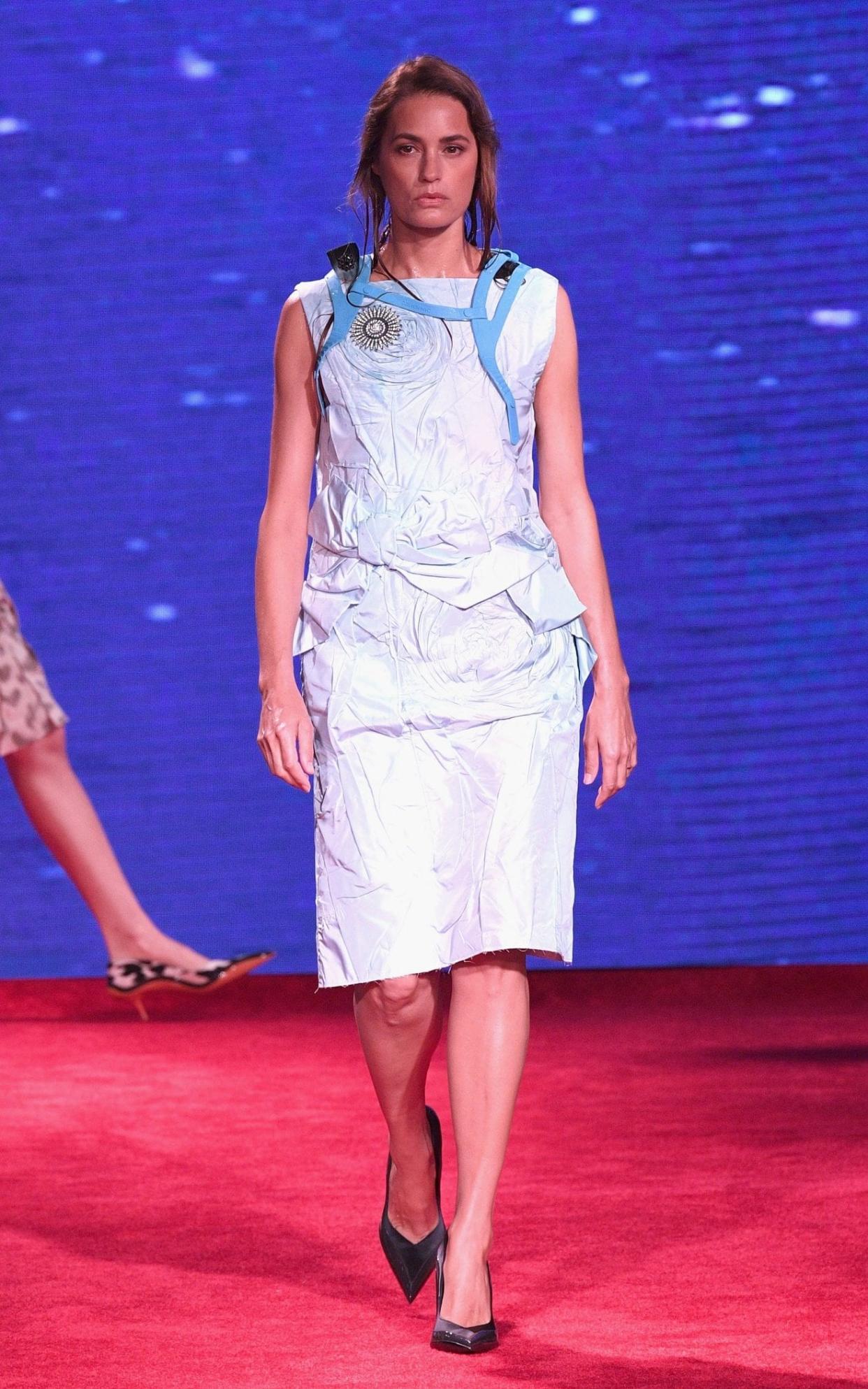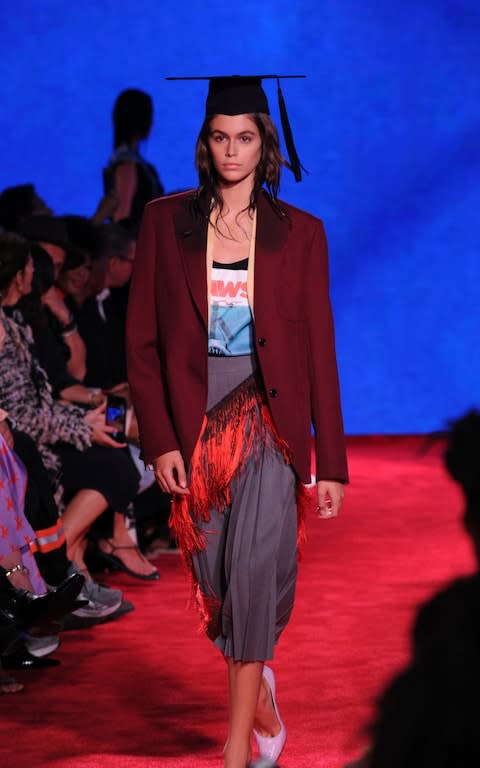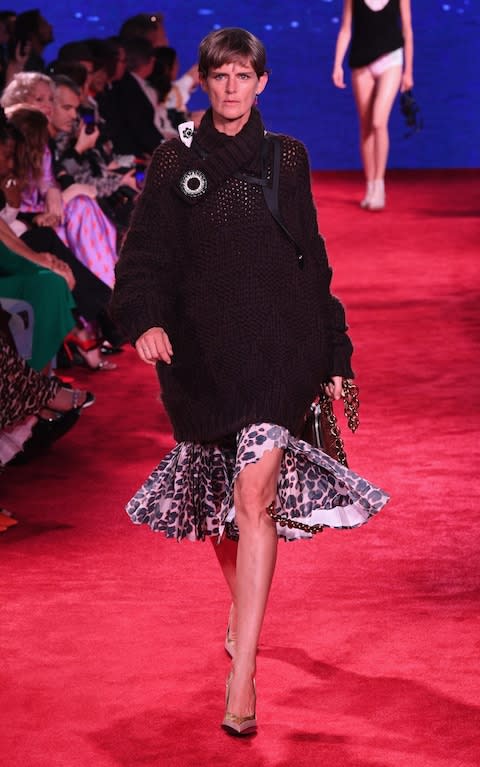At Calvin Klein, Raf Simons twists the American Dream with help from Yasmin Le Bon and Stella Tennant

All week long in New York, designers have, in their own way, been exploring the broad tropes of Americana. Ralph Lauren showcased his glossy, Navaho blanket-covered, broad-shouldered, upper class aspirations in his 50th anniversary show. At Carolina Herrera and Oscar de le Renta, a new generation of designers are figuring out what high society women need to wear now that they have more to do than lunch. Whilst at Coach, Stuart Vevers looked to the underbelly of the prairies and even Disney for some answers. It is a town full of clichés which are being explored and in some cases ripped apart.

The riches of cultural ephemera in this land of the free is something few can resist exploring and Raf Simons - the Belgian, 50-year-old, fiercely intellectual mind in charge of the Calvin Klein empire - is no different from any outsider looking in, trying to make sense of this expanse of land and supposed opportunity.
What makes the American dream? For Simons, he drew out ideas from the middle classes, aspiring to those white picket fences, barbeques with neighbours on the carefully manicured lawn, a boat perhaps, to take out for clams and crayfish along the coast, children with college education and valedictorian speeches.

His set was a blood red carpet, the walls covered by a screen showing lapping waves, an expanse of ocean punctuated only by watchtowers out at sea. A woman swims, the only sound is that of her body moving in the waves… and then, here comes the horror. Here comes the shark in the water. “At the beach there is this incredible idea of beauty, but also a tension - between land and ocean, a feeling of two worlds colliding. There’s a sense of the unexpected - and always a temptation. For me, JAWS, perfectly exemplifies these notions,” explained the designer of his edging towards the messy, bloody side of American mores.
His models struck out like survivors of any classic horror story. Here were the college graduates, mortar boards mixed up with scuba suits worn at half mast, folded down over the waist. There was Yasmin Le Bon, a veritable Mrs Robinson, in pointed heels and a ruched cocktail dress clasped together with juicy crystal brooches, hair dripping a little wet at the ends, the dresses slashed open at the back, blood stained underneath.

A sinister plot continued; lounge-act tuxedo jackets in jarring pastels; Stella Tennant stalked out, in a spliced open pleated skirt, chunky fisherman knit thrown over the top - as if sitting on the dock, post rescue, hands being warmed by a 'cawfee' in a polystyrene cup. The mind could run off with the stories here; a graduation party gone wrong; all over board; all a sodden mess. A flurry of horror tales, looking for meaning and answers; looking for a happy ending. Dead debutantes and Hitchcock heroines. After the show, Simons elucidated that there is a “fine line between horror and beauty.” Indeed. Here he threw out a sinister hand, something darker and with depth, but also that insistence of elegance, at any cost.
In his notes, Simons offered word from that master manipulator of pop culture, Andy Warhol. “People sometimes say the way things happen in the movies is unreal, but actually, it’s the way things happen to you in life that’s unreal.”
Solve the daily Crossword

